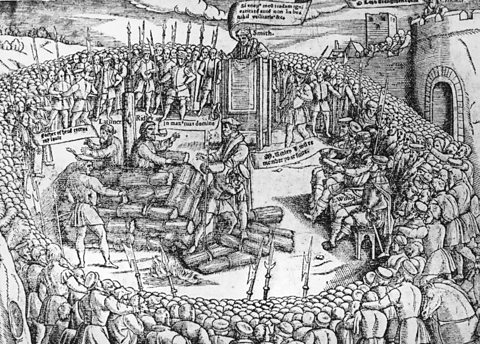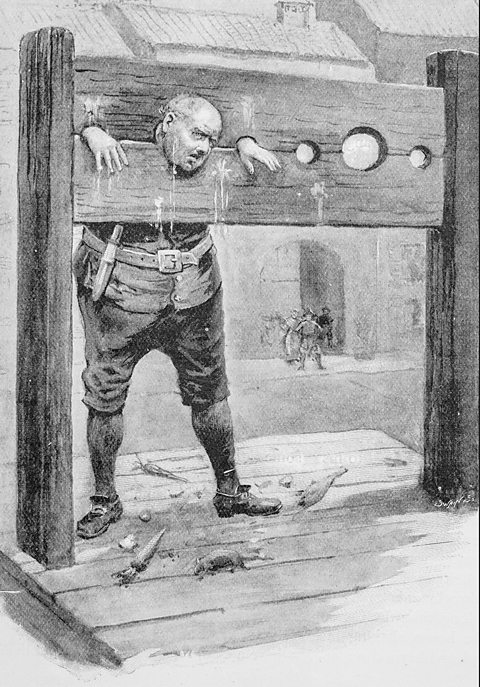Retribution and deterrence in the 16th and 17th centuries
In the face of a rising crime rate, attitudes to punishment in the 16th and 17th centuries were very harsh. Punishments were intended to make the criminal suffer and also discourage others from committing crimes by making them want to avoid similar punishments themselves.
Retribution
Retribution means to give an equivalent or returned punishment for a crime. It suggests a victim taking vengeanceTo get revenge. for a crime by making the criminal suffer. The desire for retribution was a key purpose of punishment until the early 19th century.
This was a key attitude behind capital punishment (punishment by death) and corporal punishment (punishment using pain) from the 16th to the 19th centuries. There were different punishments for different types of crime. All punishments gave retribution as criminals were made to suffer pain, humiliation and often death for their crimes.
Deterrence
Deterrence means to discourage someone from committing a crime by making them afraid of the consequences. This is usually done by making the punishment harsh and unpleasant.
Punishment
The methods of capital and corporal punishment used during the Tudor and Stuart periods demonstrate the desire to make punishment particularly brutal. Punishments were intended to both act as deterrents and deliver retribution
Capital punishment
Serious crimes in Tudor and Stuart times resulted in capital punishment. The most common method of execution was by hanging. Other methods of execution included burning at the stake, which was the punishment for heresyA belief or opinion which disagrees with the teachings of the Church.

Corporal punishment

Several methods of corporal punishmentA punishment involving physical harm, such as flogging. were also used in the 16th and 17th centuries. The stocksA wooden frame with holes to hold the feet of someone convicted of a crime. and pilloryA wooden frame with holes to hold the head and hands of someone convicted of a crime. were commonly used to humiliate and inflict pain on criminals. floggingA punishment that involves a public beating, usually with a flexible stick. was also used. Earlier in the period, mutilateTo disfigure or remove parts of a body. and brandingMarking a personтs skin with a hot iron. Vagrants were branded with a letter V for example. were commonly used. Punishments like these were designed to be visible to the whole community. This made them more humiliating for the criminal but also made them a more effective deterrent, as others knew what they would face if they committed the same crime.
Women who were said to scold or argue with their husbands were often punished with a ducking stoolA type of punishment where someone was strapped to a wooden chair attached to the end of an iron beam. The chair was then repeatedly lowered into a local river or pond and this could lead to the person drowning. in a local river or pond. They might also be led around the town wearing a scoldтs bridle - a heavy iron cage for the head with a piece of iron to go into the mouth and sit on the tongue. The fact that women experienced these punishments reflected the attitudes towards women and their status in the early modern period.